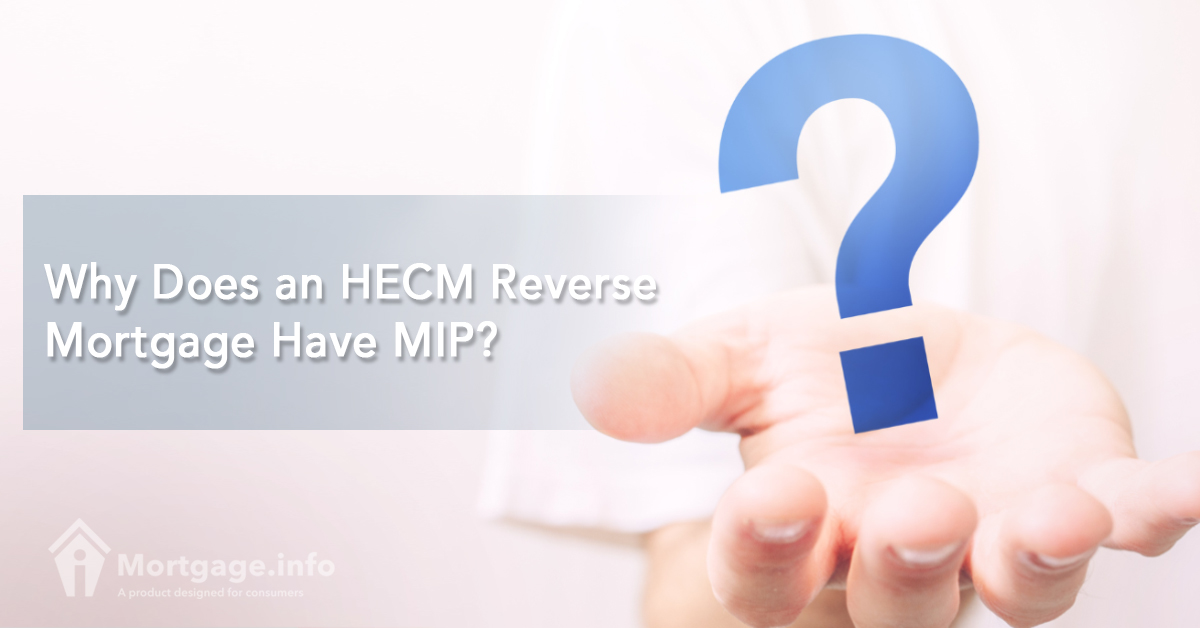An HECM Reverse Mortgage gives seniors access to the equity in their home. It is a common program for people over the age of 62 who own their home outright. Whether they are in a bind and need funds or they want to enjoy their money while they are alive, the HECM can help. The reverse mortgage works differently than a regular mortgage. Instead of making monthly payments, you do not owe any money until you or your inheritants sell your home. This does not mean, however, that you do not pay interest or mortgage insurance premium. Both fees accumulate over the life of the loan.
The Reason for Mortgage Insurance
It might not make sense that you have to pay mortgage insurance on a loan that you don’t make payments on, but it is for the protection of the lender. Because the HECM Reverse Mortgage is a non-recourse loan, you do not owe more than the home is worth when you sell it. This means if the home decreases in value, you would pay the bank less than you borrowed in the first place. Rather than the bank putting themselves at risk, the bank receives coverage from the mortgage insurance company.
Another reason you pay mortgage insurance premium upfront and annually is to protect yourself. If the bank that funded your loan were to go bankrupt, your payments would stop if it weren’t for MIP coverage. With this insurance in place, the insurance company ensures that you still receive your payments as determined upon signing the loan documents.
The Upfront Mortgage Insurance
One type of mortgage insurance you pay is the upfront mortgage insurance. This is the amount you would pay at the closing. However, with the Reverse Mortgage, you are able to wrap the fee into your loan amount. This means you pay the fee when you sell the home. Right now, the upfront mortgage insurance you will pay equals 0.5% of the loan amount if you take less than or equal to 60% of the value of the property. If you take more than 60% of the value of the property, the fee increases to 2.5% of the loan amount.
The Annual Mortgage Insurance on an HECM Reverse Mortgage
In addition to the upfront mortgage insurance, you will pay annual mortgage insurance. This fee equals 1.25% of the loan balance no matter your LTV. This means if you take $200,000, you would pay $2,500 per year in annual MIP. This amount accumulates until the loan is paid off.
The Maximum Amount Allowed
Most borrowers do not borrow more than 60% of their allowed amount since the maximum value for anyone to borrow, regardless of age or any other factors is 70% of the home’s value. It does not make sense to take more than 60% and pay the exorbitant fees the FHA charges for values over 60% of the HECM availability.
MIP Works Just Like Interest
Something to keep in mind is that MIP works just like interest. You don’t pay it until you pay the loan off. This means that you cannot deduct these fees on your tax returns because you did not physically pay the money. Once you pay the interest and mortgage insurance premium when you sell the home, however, you can deduct these fees if you are eligible to do so.
MIP might seem like just another expense that you have to endure, but it is there to protect you. Because of the volatility involved in the Reverse Mortgage, it makes sense to pay the premiums to protect yourself. The chances of a lender stopping payments are very unlikely, but it pays to have the insurance in place to ensure that you are covered in the worst of circumstances.

